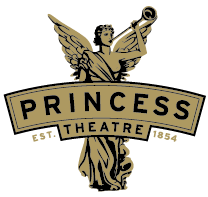History
REGENT THEATRE
The lavish opulence of the Regent Theatre is a product of the glorious fantasy and escapism of Hollywood, right in the heart of Melbourne. Originally a ‘picture palace’, the Regent is now one of Melbourne’s premier live performance venues.
The theatrical and cinema entrepreneur, Francis W Thring, was responsible for the Regent Theatre as the flagship of his Regent cinema franchise (later sold to Hoyts), and it was built under his personal supervision. It was constructed in a race against the Union Theatre’s Forum Theatre, in order to be the first and most extravagant picture palace in Melbourne.
The Regent opened on 15 March 1929, a month after the Forum. Affectionately known as ‘The Palace for the People’, the Rococo interior was inspired by the New York Capitol Theatre, which had been completed in 1913 and was, at the time, considered to be the most lavish theatre in the world.
The complex consisted of two venues: the 3,500 seat Regent Theatre, designed for entertainment, in which live stage, orchestra and Wurlitzer Organ performances were of equal importance to silent films. Downstairs, the Plaza was originally intended as a ballroom, with its side promenades for dining and a large central dance floor. Considering the difficulty of obtaining a liquor licence and the advent of ‘talkies’, it was decided to convert the Plaza to a cinema, creating the first duplex cinema in Australia.
The Regent went on to become the Australian showcase for the major American studios, premiering films such as A Star Is Born, There’s No Business Like Show Business, Gentlemen Prefer Blondes, The King And I, and many more.
In 1945, the Regent suffered a devastating fire, which almost completely destroyed the auditorium, leaving only the foyers and the Plaza intact. The Lord Mayor at the time promised Melburnians that the Regent would be rebuilt, despite the scarcity of building materials brought on by World War II.
Two and a half years later, on 19 December 1949, the Regent reopened. The original architecture had been painstakingly re-created using the original moulds, the massive sixty-foot dome and its surrounding smaller domes were resplendent with beautiful new chandeliers, and it even featured a new organ.
A pacesetter in entertainment technology, the Regent presented the first Cinemascope film in 1953, for which a giant curved screen – over fifteen meters wide – was installed over the orchestra pit. The Plaza was also quickly equipped for Cinemascope, although in 1958, it became one of the few cinemas outside North America to use the even more sensational Cinerama process, involving a giant curved screen and three-projection presentation.
The introduction of television struck the death knell for the two enormous cinemas. After years of dwindling audiences, the curtain came down for the last time on 1 July 1970 and the Regent Theatre closed its doors.
Following its closure, successive governments sought to demolish the Regent, as part of a ‘City Square’ development. Due to the uncertainty around the site, a ‘Save the Regent’ campaign was launched by the community, and submitted a petition of 1800 names to the Melbourne City Council in 1975 to protect the building. Despite an initial refusal by the National Trust, the Regent was classified in 1979.
In 1977, Victorian Premier Rupert Hamer’s intervention to declare it a ‘landmark’ saw more than 15 different proposals for redevelopment, including a boutique hotel, casino, and even a car park, though all failed to materialise.
It wasn’t until 1990 that David Marriner approached the Melbourne City Council with plans to refurbish and redevelop the complex back to its former glory. After years of negotiation, the restoration commenced in 1993 and took three years of meticulous craftsmanship to bring the Regent back to its former breathtaking glory.
The Plaza Ballroom was also restored for its original intended purpose, and is one of Melbourne’s most unique and flexible venues, hosting galas, dinners, fashion shows and film screenings.
After lying derelict for 26 years, The Regent once again came alive, with a gala reopening on 17 August 1996. Andrew Lloyd Webber’s Sunset Boulevard was the first musical production to grace the new stage, premiering on 26 October 1996.
The Regent has since been the home of some of Melbourne’s biggest shows: Fiddler on the Roof starring Topol, Singin’ In The Rain, Oliver!, We Will Rock You, The Lion King, WICKED, and Andrew Lloyd Webber’s new Love Never Dies.
*****
PRINCESS THEATRE
The Princess Theatre has a remarkable history, almost dating back to Melbourne’s foundation. Originally an equestrian amphitheatre, the Spring Street site was extended and remodelled in 1857 by Australia’s theatre impresario of the time, George Coppin, and opened as The Princess Theatre and Opera House.
Ownership of the theatre changed on an almost annual basis, and underwent several more renovations – the most significant being in 1865, with everything other than the shell of the building rebuilt from scratch. Despite initial commercial success, the building fell into disrepair and closed on 3 January 1885.
The Princess had a new lease of life due to The Triumvirate – a partnership of JC Williamson, George Musgrove and Arthur Garner – three of Australia’s most influential theatre practitioners. Construction took nine months (three months longer than scheduled), and at a cost of £50,000.
The New Princess Theatre opened in 18 December 1886, with a performance of The Mikado. Designed by William Pitt, the building remains one of the finest examples of exuberant ‘Second Empire’ architecture, and contributes to the decidedly Victorian streetscape of Spring Street.
Its marble stairs and foyer were hailed as equal to the Paris Opera, the Frankfurt Stadt and the Grand in Bordeaux. It featured the world’s first sliding or retractable roof, and state-of-the-art electrical stage lighting.
The New Princess Theatre became renowned for drama, opera and ballet – a staple of entertainment for the next fifty years. It also became known for its most famous resident. Frederick Baker, known to the world as Federici, was playing the role of Mephistopheles in Faust. As he descended into ‘hell’ amid smoke and flame through a trap door, Federici suffered a heart attack and died on the spot. The cast, informed of his passing after the show, were in disbelief as they had all just seen him on stage for the curtain call! Federici continues to reside in the Princess, with regular sightings and mysterious occurrences.
In 1901, the outdoor terraces on the first floor were enclosed with stained glass windows to create a Wintergarden Bar. Further renovations took place in 1922, and under the ownership of Benjamin and John Fuller and Hugh J Ward, the auditorium and façade were extensively remodelled. Columns supporting the Dress and Grand Circle were removed and replaced with cantilevered balconies, and the original shops and separate entrances to the theatre on Spring Street were converted into a foyer. The grand copper awning was also installed.
Garnet H. Carroll took over ownership of the Princess in the 1940’s, and from 1942 to 1947, ran it exclusively as a cinema, due to the scarcities of World War II. After reverting back to live theatre, the Princess staged Gilbert and Sullivan operettas, dramas, comedies, and the new ‘musical theatre’ productions. During the golden age of Melbourne theatre in the 1950s and 60s, the Princess hosted Australian premieres including West Side Story, The King and I, and Carousel.
In 1973, the Princess Theatre was listed by the National Trust, although by the 1980’s the theatre had once again slipped into disrepair and could no longer stage modern shows. In 1986, David Marriner purchased the Princess Theatre and set about planning its total refurbishment, ensuring its future viability as a live theatre.
A complete historical study was carried out, which recommended the reinstatement of the 1922 design, as most 1886 elements had disappeared through regular renovation. Samples of original light fittings were found and replicated, and almost 2,000 paint samples were microscopically analysed to ensure an accurate reproduction.
Work commenced to raise the height of the proscenium, remove the nineteenth-century stage equipment, construct a new fly tower above the stage, and install new bars and public amenities. Paintings and colour schemes were carefully restored, including the ‘colour glazing’ in the auditorium dome, in which the colours blend from a darker hue to a lighter range near the central sunburst. Painters were trained on-site in the special techniques, just as it was done in 1922.
On 9 December 1989, the restored Princess Theatre reopened with great fanfare with the new production of Les Miserables. It was immediately followed by the blockbuster The Phantom Of The Opera, premiering in December 1990, which went on to smash box office records as the longest-running show ever staged in Australia.
Since then, the Princess Theatre has been established as the home of musical theatre in Australia. Beauty and the Beast, MAMMA MIA!, The Producers, Guys and Dolls and Jersey Boys have all opened in the beautifully restored theatre, that has once again become one of Australia's most loved theatre venues.
*****
FORUM THEATRE
One of the most recognised landmarks in Melbourne, the iconic Forum Theatre has an extensive history covering film, cabaret, comedy and live music.
Sold in the first Melbourne land auction in 1837, the site on the corner of Flinders and Russell Streets was originally used as a private residence. Over the years, the land was regularly repurposed – an iron store, coal yards, offices and a bond store – until the turn of the century, when the Herald and Standard Newspaper Company occupied the Flinders Street building, with the State Migration Office around the corner in Russell Street.
Both premises were vacated when purchased by Stuart Doyle, Managing Director of Union Theatres, to make way for the new State Theatre ‘picture palace’.
In the early 1920’s, during a visit to America, Stuart Doyle met John Eberson, who had designed a chain of ‘atmospheric’ theatres, including the famed Riviera in Chicago. Unique for their ceilings that give the illusion of sitting under a night sky, atmospheric theatres were especially popular in North America, and Eberson its main proponent.
Doyle commissioned Eberson to design three Australian theatres – the State Theatre, the Capitol Theatre in Sydney, and the Ambassador in Perth. Construction began in 1927, and was built as a mirror image of Sydney’s Capitol Theatre. The auditorium had the ambience of a Florentine garden, even featuring a copy of the Venus De Capua (the original stands in the Naples Museum), and busts of classic Greek and Roman statues such as Diana of Versailles (the original stands in the Louvre) and Discobolus (now in the Vatican). The majority of the sculptures were cast directly from the originals. To encourage the theatre’s image of a heavenly garden, fresh flowers were placed around the auditorium, to fragrantly complete the picture.
Throughout the entire auditorium, the cerulean blue ceiling – imitating the Mediterranean sky – gave the feeling of being seated under an open evening sky, complete with twinkling stars and projected clouds floating past.
Union Theatres competed with Hoyts’ Regent Theatre in Collins Street to be the first to open an extravagant picture palace. The State won the race after seven months’ construction time and opened on 23 February 1929, three weeks ahead of the Regent. A fabulous creation of fantasy both inside and out, it is also one of only a few atmospheric theatres built outside North America.
Opening night was nothing less than spectacular, and presented the silent films The Fleet’s In starring Miss Clara Bow, and The Cameraman starring Buster Keaton. The first ‘talkie’ was The Doctor's Secret, premiering on 6 April 1929. By 1938, the longer theatre hours allowed a feature movie, with an orchestral presentation and a Tivoli stage act.
The State Theatre quickly became a Melbourne landmark. Its iconic copper-domed clock tower rose 49 meters from the street, and was immediately noticed by commuters exiting Flinders Street Station. The grand façade featured a replica minaret of one standing on a Cairo mosque alongside smaller minarets with ornate windows. Together with pressed cement walls, lace-like balustrading, slender columns, receding balconies and towers all painted in bright, bold colours and lit with twinkling lights, the Forum was an imposing, magnificent Melbourne monument.
The grandness of the theatre was immediately apparent as soon as audiences entered the foyer. Patrons’ attention was immediately drawn to the illuminated clock in the centre of the floor, synchronised to the clock tower. Audiences in the 1,372 seat Dress Circle entered through rotundas on either side, while audiences in the 1,999 seat Stalls were overwhelmed by the vast night sky, complete with accurately placed constellations. At 3,371 seats, the Forum featured the largest seating capacity in the southern hemisphere.
By the early 60’s, television had made serious cuts to theatre attendance, so Greater Union decided to convert the State Theatre into two smaller theatres. The walls were brought in, reducing the seating area, and wall decorations were repositioned. The Dress Circle and Stalls were then split into two theatres – the Forum downstairs, and the upstairs Rapallo, for which a new stage was built.
The Forum opened in 1962, and the Rapallo opened in 1963. In November 1978, the building was added to the Historic Buildings Register and came under the protection of the National Trust. In 1981, both theatres were extensively refurbished and opened as Forum I and Forum II.
In November 1986, the Forum complex was purchased by the Melbourne Revival Centre and used as their meeting place for almost ten years. In 1996, David Marriner bought the complex, converting the Forum into one of Melbourne’s premier live music and cabaret venues, with comedians, magicians, dancers and live bands performing under the cerulean sky. Forum II is a 500 seat theatre-style auditorium used for film screenings and smaller-scale live performances.
The Forum continues to bring pleasure to many patrons, both young and old, and is proof positive that beauty and originality are timeless, and that this unique building will continue to light up the eyes of an appreciative public for many years to come.
*****
COMEDY THEATRE
The Comedy Theatre is one of the city’s most unique theatres, dating from Melbourne’s theatrical boom in the late 1920’s.
The first recorded use of the site on the corner of Lonsdale and Stephen (later to become Exhibition) Streets was Rowe’s American Circus in 1852, which flourished in Melbourne’s gold-rush fuelled prosperity. It was soon purchased by theatrical entrepreneur George Coppin as the location for his first Melbourne theatre, the Olympic.
Known locally as the “Iron Pot”, the Olympic was actually a prefabricated cast iron building, manufactured in Manchester, England, and shipped to Australia. The first show was in June 1855, and a conjurer was the main attraction. The Olympic lasted only five years as a theatre, not helped by the nearby Theatre Royal in Bourke Street opening just one week beforehand, which proved to be more central and cooler in summer.
Following its closure, the site was used for a variety of purposes – initially as Melbourne’s first Turkish baths, then following a fire in 1866, as a warehouse. In the 1880’s, it was again used a circus site, as well as the headquarters for ‘King’ Cole, producer of ‘blood-and-thunder’, lowbrow melodrama.
In 1913, JC Williamsons, one of the largest theatrical companies in the world, purchased the site, having already been based at Her Majesty’s Theatre across the road for some 13 years. The space was initially used as short-lived film studio, and a scenery dock for Her Majesty’s.
By the mid-1920’s, JC Williamsons had long been aware that developments in theatre entertainment meant a particular style of play required a certain type of venue, and decided to fulfil their desire to own and operate a more ‘intimate’ theatre by constructing the Comedy Theatre on the site.
The Comedy opened on 28 April 1928 with the premiere the play Our Betters, and featured the London star Margaret Bannerman – brought out to Australia especially for the opening. It also became the headquarters for the JC Williamson empire, occupying three levels of offices behind the façade.
The theatre was the first in Australia to dispense with the popular gallery and combine the dress circle and upper circle into the one tier. Its exterior façade, complete with small wrought-iron balconies, is a replica of a Florentine palace, was greatly admired and unique to the theatre in Australia. The interior design was known at the time as Spanish-Renaissance, and much use was made of gilt to relieve the otherwise sombre colouring.
The Comedy went on to feature such actors as Nellie Stewart, Ethel Morrison, Frank Harvey, Googie Withers and John McCallum, in plays by Noël Coward and JM Barrie, Ray Lawler’s Summer of the Seventeenth Doll and Tennessee William’s A Streetcar Named Desire in the 1950’s.
Even following the closure of JC Williamsons in 1978, the Comedy continued staging shows, including the hit Nunsense in 1987.
In 1996, the theatre was purchased by David Marriner, becoming the fourth theatre in the Marriner Group. It has since staged a diverse set of entertainment, including stand-up and musical comedy – now a venue of choice during the Melbourne International Comedy Festival – as well as productions like Waiting for Godot featuring Sir Ian McKellen, Calendar Girls, and the acclaimed Rock of Ages.
The Comedy Theatre was classified by the Victorian Heritage Register in 2011.
*****
Marriner Theatre Archive
We would love your theatre memorabilia for the Marriner Theatre Archive which dates back over 100 years.
- Programmes
- Paper cuttings
- Photographs
- Postcards
Call 03 9299 9990 or email [email protected]







